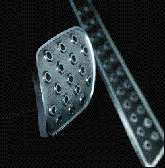CarTest! Expert car reviews and advice | home
CarTest! Expert car reviews and advice | CarTest Contents | New Car Reviews | Used Car Reviews | What is your car worth? | Automotive NewsBriefs | Award-Winning Models | Find the Best Vehicle | Automotive Advice | Save on Gas | Driving Tips & Maintenance Advice | Safety Research & Insurance Tips | Tire Advice | Road Trips | Auto Racing | Classics & Collectibles | Newsletter | About Us | SEARCH CarTest!

©CarTest.ca. All rights reserved.
Winterizing tips
Driving in a winter wonderland takes preparation
 Walking in a winter wonderland may be a beautiful sight but driving amid the first snow can rattle your nerves if your car isn't prepared for winter. Car Care Canada suggests motorists have their vehicles winterized before harsh weather arrives and especially before embarking on road trips for the holidays.
Walking in a winter wonderland may be a beautiful sight but driving amid the first snow can rattle your nerves if your car isn't prepared for winter. Car Care Canada suggests motorists have their vehicles winterized before harsh weather arrives and especially before embarking on road trips for the holidays.“It's easy to get caught up in the hustle and bustle of the holidays and overlook getting a vehicle ready for winter,” said racecar driver and Be Car Care Aware spokesperson Kelly Williams. “A vehicle that is ready for winter road conditions and colder temperatures will likely be safer and more reliable, giving motorists one less thing to worry about when heading out for the holidays.”
Here are some easy steps to help get your vehicle ready for winter:
Clean, flush and put new antifreeze in the cooling system. Engine coolant (which either cools or warms your engine, depending on the season) should be flushed and refilled every two years in most vehicles. In most parts of Canada, coolant should be mixed 50:50 with water to keep the coolant from freezing, lubricate the water pump, and ward off cooling-system corrosion. (Don't make the mistake of adding 100% antifreeze, as full-strength antifreeze actually has a lower freeze point than when mixed with water.)
 Check heaters, defrosters and wipers to ensure they are working properly. Wiper blades that are cracked or torn, or that chatter, streak and don't properly clean your windshield, should be replaced. Some manufacturers offer special winter blades that have a rubber boot covering the arm assembly to keep snow and ice out. When changing the blades, have the windshield wiper system nozzles cleaned and adjusted if necessary, and check the windshield washer reservoir in case it needs fluid.
Check heaters, defrosters and wipers to ensure they are working properly. Wiper blades that are cracked or torn, or that chatter, streak and don't properly clean your windshield, should be replaced. Some manufacturers offer special winter blades that have a rubber boot covering the arm assembly to keep snow and ice out. When changing the blades, have the windshield wiper system nozzles cleaned and adjusted if necessary, and check the windshield washer reservoir in case it needs fluid.Check the battery and charging system for optimum performance. Cold weather is hard on batteries and unfortunately, batteries don't always give warning signs before they fail. If your vehicle's battery is more than three years old, it's wise to have it replaced. When choosing a replacement, make sure the new one has adequate capacity for your exact make and model.
Check your tire treads and pressure. Tire tread condition is crucial when driving on ice and snow. Also check inflation. Buy snow tires if snow and ice are a problem in your area. Finally, check the tire pressure of the spare tire.
Change your oil. Check the owner's manual to see if your driving is considered 'severe' and if so, have the oil changed accordingly, usually every 5,000-8,000 kilometres. Also, consider changing to'“winter weight' oil if you live in a cold climate. Note, most Canadians qualify for severe conditions, which means you drive in stop-and-go traffic, in mountainous terrain, or other conditions that increase wear and tear on your vehicle.
Change filters as needed. Have your automotive service technician check the fuel, air and transmission filters at the same time you change your oil. Always consult your vehicle's owner's manual.
Keep you gas tank at least half full. This tip limits condensation in your tank and reduces gas-line freezing. Adding a little gas-line antifreeze every second fill-up will also help prevent gas-line freezing.
If you're due for a tune-up, have it done before winter sets in. Winter magnifies existing problems such as pings, hard starts, sluggish performance or rough idling. A routine tune-up will restore a vehicle back to its normal operating state, and contribute to the overall efficiency of the engine and emissions system.
Check the brakes. This braking system is the vehicle's most important safety item and brakes are a normal wear item that sooner or later will need to be replaced.
Check the exhaust system for carbon monoxide leaks. Leaks can be especially dangerous during cold weather driving when windows are closed. Regular exhaust system checks are critical to maintain a safe vehicle.
Pack an emergency kit. Include the following items: ice scraper and snow brush, jumper cables, flashlight, flares, blanket, extra clothes, candles/matches, bottled water, dry food snacks and needed medication.
To learn more, visit the Be Car Care Aware website at www.carcarecanada.ca.
Posted Nov. 11, 2009. © CarTest.ca.
Search CarTest!

Custom Search